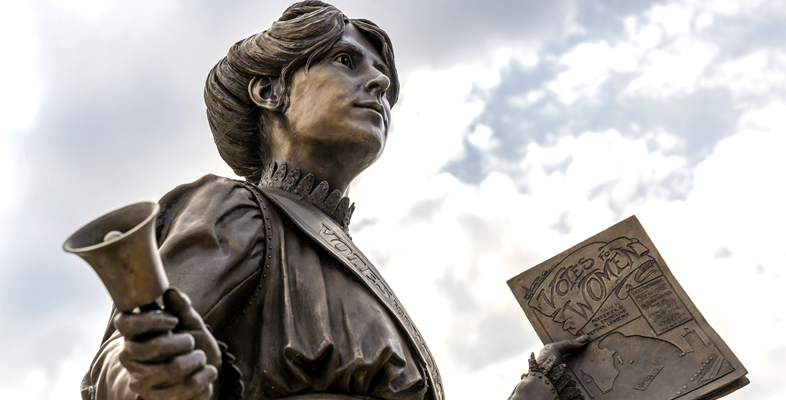7.2 Getting the vote
The Representation of the People Act 1918 gave the vote not only to men over the age of 21, but also to women over the age of 30. (Women, in addition, had to fulfil a property requirement, which meant this legislation excluded poorer women.) Women were also now entitled to stand as MPs. Historians debate the precise nature of the reasons for this dramatic change, but rewarding women for their role in the war effort was definitely a factor. It was also significant that Asquith (who had been opposed to women’s suffrage) was no longer Prime Minister and had been succeeded by Lloyd George, who turned out to be more sympathetic to the cause of votes for women – despite the earlier fire-bombing of his home (which you read about earlier in this course).
Once this crucial change had been made, there was strong momentum for further reform. In 1928, a few days after Emmeline Pankhurst died, women were finally given equality with men in national elections, gaining the entitlement to vote from the age of 21.
From all the materials you have engaged with so far, you will probably be coming to a conclusion about what you think were the most significant factors in women being given the right to vote.
Activity 9 Factors in women getting the vote
Using the text box below, or your learning notebook, make a list of what you think are three of the most significant factors in women being given the right to vote. Add a line or two of explanation, based on your work on the course materials or on the additional resources you have consulted in the activities. Were particular individuals very effective in the campaign, do you think? You could list them if so.
Discussion
There are a number of factors you could have chosen. Did you focus on individuals, or on campaign strategy, or on historical events, such as the coming of war?
As is so often the case with the study of history, the debate continues, with historians and other researchers of the women’s movement putting forward a range of interpretations. (You could look for some examples in the work of Elizabeth Crawford, or Martin Pugh, both of whom have been mentioned in this course; there are plenty of relevant discussions online too.) Opinion remains divided on the WSPU, but one cannot doubt the bravery and sacrifices of its members in trying to secure a basic human right.
